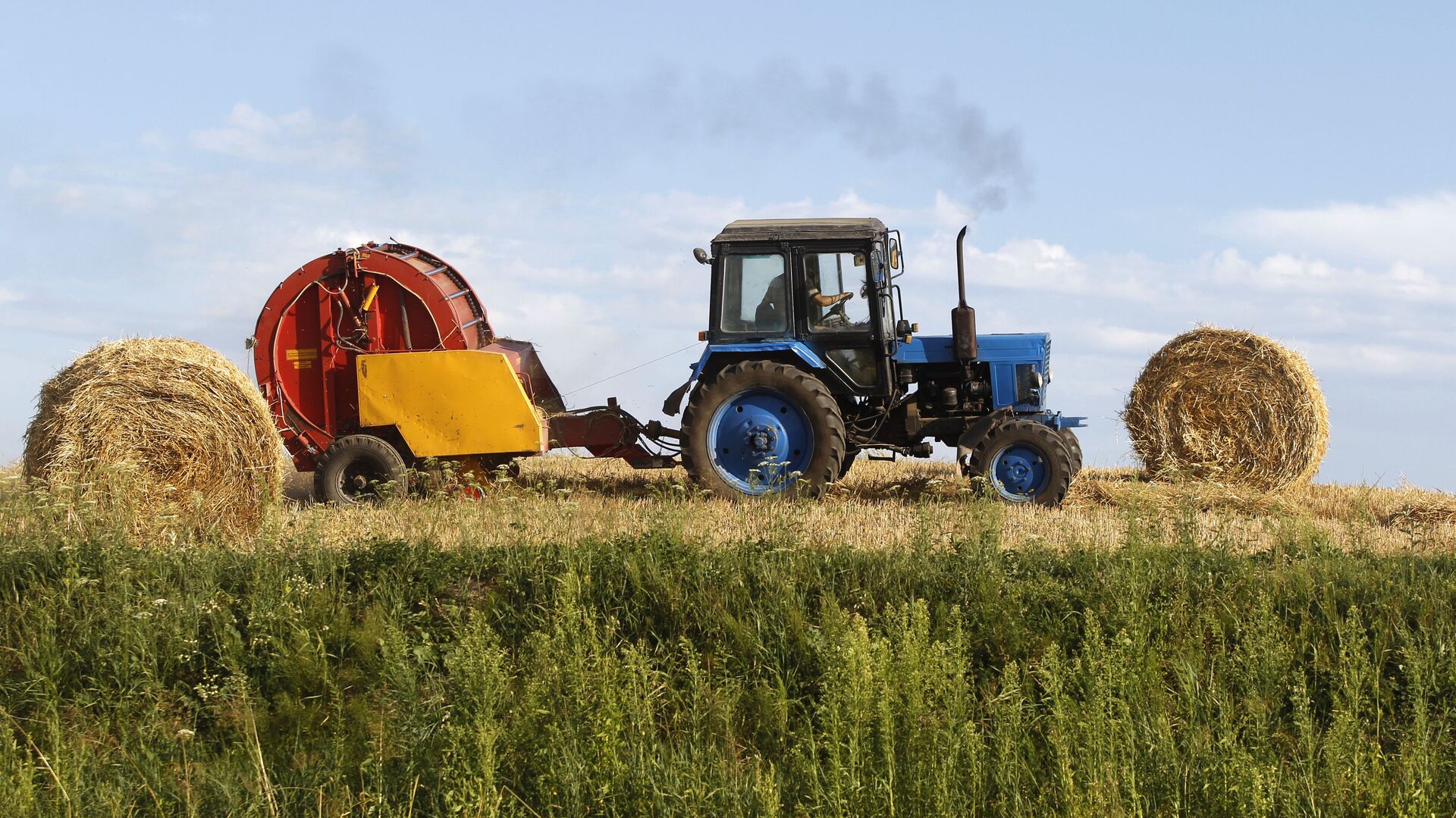https://sputnikglobe.com/20211021/straw-vs-oil-scientists-find-unusual-way-to-use-husks--1090100387.html
Straw vs Oil: Scientists Find Unusual Way to Use Husks
Straw vs Oil: Scientists Find Unusual Way to Use Husks
Sputnik International
Rotting agricultural residues create many problems for the agro-industrial complex, ranging from a drop in yield to additional expenses for the utilisation of... 21.10.2021, Sputnik International
2021-10-21T12:59+0000
2021-10-21T12:59+0000
2022-08-06T13:35+0000
science & tech
russia
straws
https://cdn1.img.sputnikglobe.com/img/105367/00/1053670047_0:0:3542:1992_1920x0_80_0_0_0a19897c9735d3ccdbf09d6c2e34a226.jpg
Once the agro-industrial crops are harvested, there is a large amount of straw and husks left in the fields. These agricultural residues have to be removed, the university experts explain, otherwise, they will rot, and the next yield will decline. This leads to additional work and higher production costs. In order to solve this problem, experts at the Don State Technical University (DSTU) brought together specialists within the framework of the “MPI School,” an educational project for young scientists aimed at developing their professional competencies. The technologies that will be developed by the study will make it possible to prevent losses by using agricultural waste in the production of building materials.According to him, at first, straw and husks are washed and cleaned. Afterwards, an alkaline solution is applied to remove the protective wax silicon layer and open the pores. Then straw and husks are washed with distilled water, dried, and heated in an oven without oxygen at a temperature of 600 degrees Celsius for half an hour.“After processing, burnt straw and husks can be formed into coal tablets, which can be loaded into a filter and used as a sorbent for purifying water from heavy metals and oil products,” Stelmach said.By saturating the tablets with silver nitrate, scientists have found that the metal molecules embedded in the coal structure allow it to be used for water disinfection. In addition, the experts believe that burnt straw or husks turned to fine dust can be used to produce building materials. The substance can be added to cement building blocks to improve strength and thermal insulation.In the near future, scientists will have to find out a way to refine and grind straw to kickstart a continuous production process.Scientists from DSTU, Southern Federal University, Volgograd State Technical University, Kuban State Technological University, V.S. Pustovoit All-Russian Research Institute of Oil crops, and the Federal Scientific Centre for Biological Protection of Plants are working on the project. The study was presented during the First Education Module of the MPI School of the Interregional Scientific and Educational Centre of Southern Russia, held at DSTU in partnership with the Centre for Strategic Research “North-West” Foundation from 28-30 September.
russia
Sputnik International
feedback@sputniknews.com
+74956456601
MIA „Rosiya Segodnya“
2021
Sputnik International
feedback@sputniknews.com
+74956456601
MIA „Rosiya Segodnya“
News
en_EN
Sputnik International
feedback@sputniknews.com
+74956456601
MIA „Rosiya Segodnya“
Sputnik International
feedback@sputniknews.com
+74956456601
MIA „Rosiya Segodnya“
science & tech, russia, straws
science & tech, russia, straws
Straw vs Oil: Scientists Find Unusual Way to Use Husks
12:59 GMT 21.10.2021 (Updated: 13:35 GMT 06.08.2022) Rotting agricultural residues create many problems for the agro-industrial complex, ranging from a drop in yield to additional expenses for the utilisation of residues. Russian scientists have come up with a way to convert husks and straw into building materials and sorbents to purify water from oil products and metals.
Once the agro-industrial crops are harvested, there is a large amount of straw and husks left in the fields. These agricultural residues have to be removed, the university experts explain, otherwise, they will rot, and the next yield will decline. This leads to additional work and higher production costs.
In order to solve this problem, experts at the Don State Technical University (DSTU) brought together specialists within the framework of the “MPI School,” an educational project for young scientists aimed at developing their professional competencies. The technologies that will be developed by the study will make it possible to prevent losses by using agricultural waste in the production of building materials.
“We are trying to solve a complex ecological-economic problem, what representatives of agricultural business will be really interested in, since the technologies developed as a result of the study can minimise the losses in agricultural production. Currently, the research is carried out on rice, other grain crops will be also researched in future,” Sergey Stelmach, head of the project and assistant professor at the “Engineering Geology, Bases and Foundations” Department of DSTU, said.
According to him, at first, straw and husks are washed and cleaned. Afterwards, an alkaline solution is applied to remove the protective wax silicon layer and open the pores. Then straw and husks are washed with distilled water, dried, and heated in an oven without oxygen at a temperature of 600 degrees Celsius for half an hour.
“After processing, burnt straw and husks can be formed into coal tablets, which can be loaded into a filter and used as a sorbent for purifying water from heavy metals and oil products,” Stelmach said.
By saturating the tablets with silver nitrate, scientists have found that the metal molecules embedded in the coal structure allow it to be used for water disinfection. In addition, the experts believe that burnt straw or husks turned to fine dust can be used to produce building materials. The substance can be added to cement building blocks to improve strength and thermal insulation.
In the near future, scientists will have to find out a way to refine and grind straw to kickstart a continuous production process.
Scientists from DSTU, Southern Federal University, Volgograd State Technical University, Kuban State Technological University, V.S. Pustovoit All-Russian Research Institute of Oil crops, and the Federal Scientific Centre for Biological Protection of Plants are working on the project. The study was presented during the First Education Module of the MPI School of the Interregional Scientific and Educational Centre of Southern Russia, held at DSTU in partnership with the Centre for Strategic Research “North-West” Foundation from 28-30 September.



